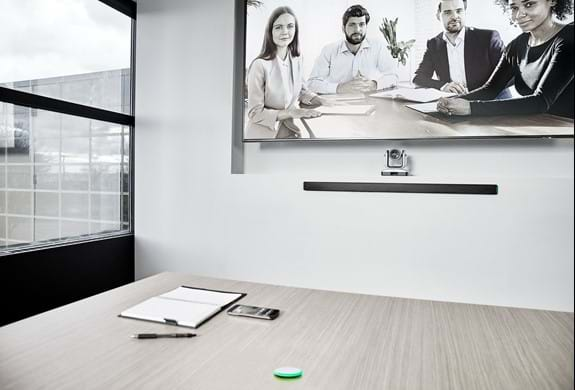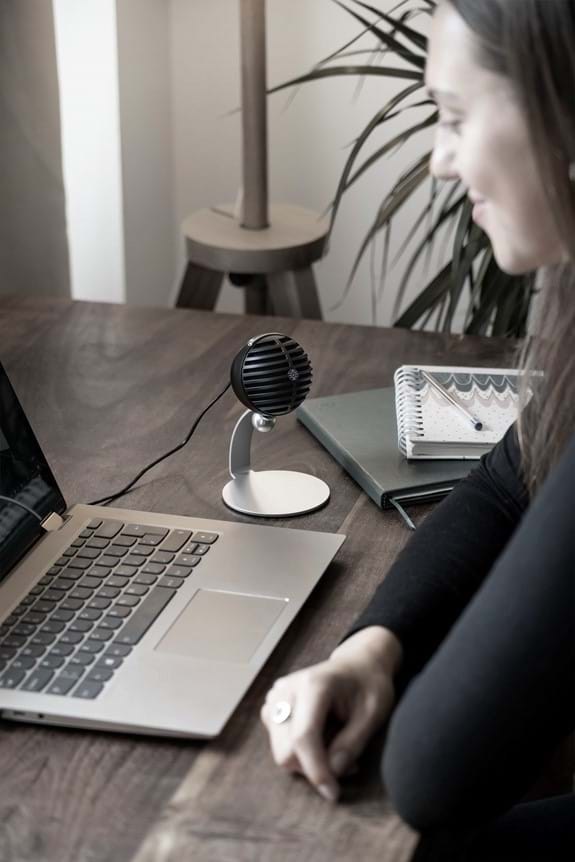
What audio devices will help return to the office – or not?
It comes as no surprise that the use of videoconferencing as a business and learning enabler has soared over the past year. Research reveals that before the coronavirus pandemic, only 4% of meetings were full video meetings — that number has since risen to 60%. Yet, while videoconferencing has pivoted from a “nice to have” to a “must have”, there have been frustrations around the audio quality on these calls.
That said, even prior to the sudden shift to working and learning from home, audio was viewed as an important component of conferencing, with one survey revealing that having great audio quality was four times more important to meeting attendees than video. There was room for improvement however, with those professionals surveyed saying 4 out of 5 of their top frustrations were related to audio.
The speed at which people went from a physical workplace (office) to a remote working environment (home) brought some additional audio challenges. Many were not well versed in professional conference etiquette (as opposed to using it socially); people talked over each other (double talk) and there were inconsistent speech levels between soft-spoken participants and those with booming voices. Gradually people learned to adapt and augment the equipment they were using at home to improve the audio experience. The faux pas many of us witnessed at the start of pandemic became humorous anecdotes.
Back to the office – while staying at home
Now, the workplace is slowly opening again amidst fluctuating lockdown scenarios. It is clear that videoconferencing will continue to play a crucial role moving forward, no matter how and when people return to work, and no matter where in the world they’re located.
Some interesting research findings show us that, having experienced the work-from-home (WFH) model, many people just want to get back to the office. Carried out in 2020 by GENSLER, a WFH study found 56% of people want to work remotely a minimum of at least 1 day a week or more, while 44% prefer to work exclusively from their office.
The sense of community seems to be the reason why the workplace is an important factor in the desire to return to the office, with 74% saying it is ‘the people’ they miss most. The challenge for IT and AV decision makers is how to best implement the appropriate technologies as we move toward a hybrid work model.

Ensuring every voice can be heard
What we can be certain of is that the requirement for more reliable, higher quality solutions that minimize the disparity between home and office set-ups will be of greater importance to ensure every voice can be heard.
Minimal touch or gesture-based conference equipment will be essential to provide a comfortable and safe collaborative environment. It will be one of several changes we expect to see in the workspace, including the following:
- BYOD (Bring Your Own Device) — Employees will be encouraged to BYOD as a relatively quick way to help minimize concerns and reduce the number of shared devices).
- Installed Microphones — Ceiling and wall-mounted microphones, along with digital signal processing (DSP) software, will enable touch-free and high-quality audio.
- Sensors vs. Touch Panels — Sensors that control lighting, rather than touch panels, and room check-in via personal devices, rather than shared devices, will be a desirable feature.
- Minimized One-to-One Contact — As organizations work out how best (and when) to return to the workplace, solutions that minimize direct one-to-one contact with devices will be hugely important in ensuring employee confidence.
Relying on technology
Moving forward, the need to accommodate a remote work force will be a permanent consideration. The shape and function of the rooms where we previously met will also change, with social distancing and hygiene remaining important factors.
Finally, the reliance on technology to communicate will continue to be a critical component in all aspects of the workplace. Audio is the most important piece in this puzzle, and we will continue to rely on the ability to communicate intelligibly via videoconferencing technology.
Find out more
Interested in learning more about what the future of work might look like? Follow Troy Jensen and hear him speak at a variety of industry events, including UC Summit Conference and InfoComm.

About the author
Troy Jensen
A 30-year Audio/Video industry veteran, Troy has held numerous high-level consulting and management positions focusing on architectural acoustics, system design, and project & business management. He is also certified on several computer modeling and evaluation techniques for AV sound spaces, which is particularly helpful when serving as a guest lecturer in the Yale School of Drama M.F.A. program for Technical Design and Production.
Related Posts
It’s time to redefine the workplace
As the future of work continues to evolve, and the importance of communication and collaboration increases, reconfiguring collaboration spaces to build the right employee experience is now critical. IDC believes that investments to enhance hybrid meetings through audio quality can lead to tangible business outcomes.
IDC Video : Audio Issues with Hybrid Working Models
IDC Explores how quality audio can overcome the issues and consequences associated with hybrid working.